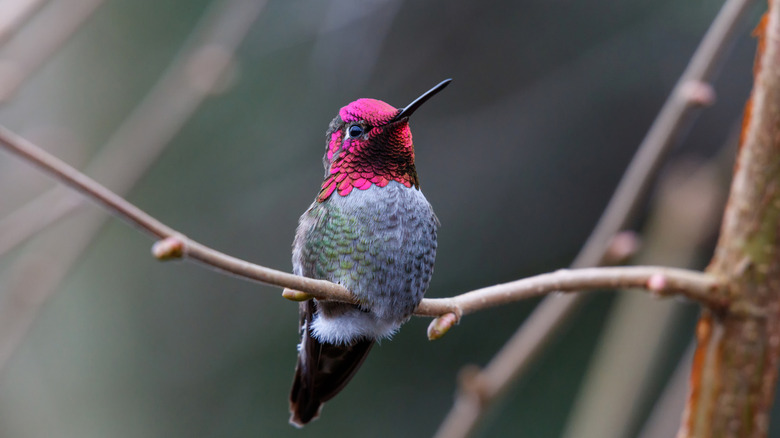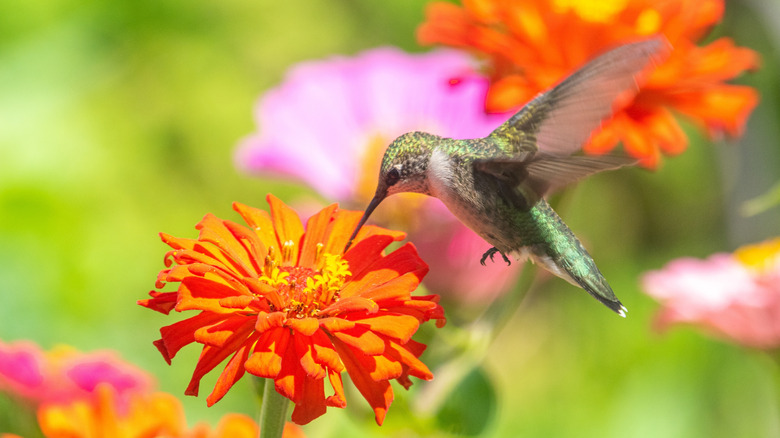Attract More Hummingbirds With A Garden Flower That's Easy To Grow From Seed
Growing a garden full of nearly instant color doesn't mean you can't also tickle your wildlife fancy. While zinnias may not look the part, these fast-growing annual flowers can nonetheless be offered as a welcome item on a floral buffet for hummingbirds. Although tubular flowers are more commonly associated with hummingbirds, many gardeners grow common zinnias (Zinnia elegans), which have dome-shaped flowers, from seed to provide food for these pollinating birds.
To make the large, showy, and long-lasting blooms of zinnias even more attractive to hummingbirds, choose tall varieties in pink, red, or orange hues. Gardeners should also prioritize single flower types (blooms that have fewer rows of petals) over ruffled, double-type blooms since an overload of petals makes it difficult for pollinators like hummingbirds to access nectar. Once you learn how to grow and care for zinnias, you'll be able to offer this floral resource to visiting hummingbirds, and other pollinators like butterflies and bees, year after year.
How to grow zinnias from seed to attract hummingbirds
The best time of year to plant zinnia seeds in the garden is after the last spring frost. When deciding where to locate these flowers, consider planting your zinnia patch alongside perennial, native plants that hummingbirds love, such as butterfly weed, asters, and bee balm, to ensure they have a variety of foods to choose from. Choose a spot in full sun that has loamy, well-draining soil, enriched with plenty of organic matter, such as compost. Sow seeds directly, covering them with ¼ inch of soil, or start zinnia seeds indoors six weeks before your last spring frost.
Zinnias can be mixed into your veggie patch since they have the same type of soil and water needs as most homegrown crops, and their seeds can be sown at the same time as many summer vegetables. Zinnia flowers can be mass planted for an impressive and colorful visual impact in the yard, as well as providing lots of forage for hummingbirds and other pollinators. To attract a multitude of beneficial insects, pollinators, and hummingbirds, grow both zinnias and sunflowers, the two of which are a pollinator powerhouse when grown together in the garden.

